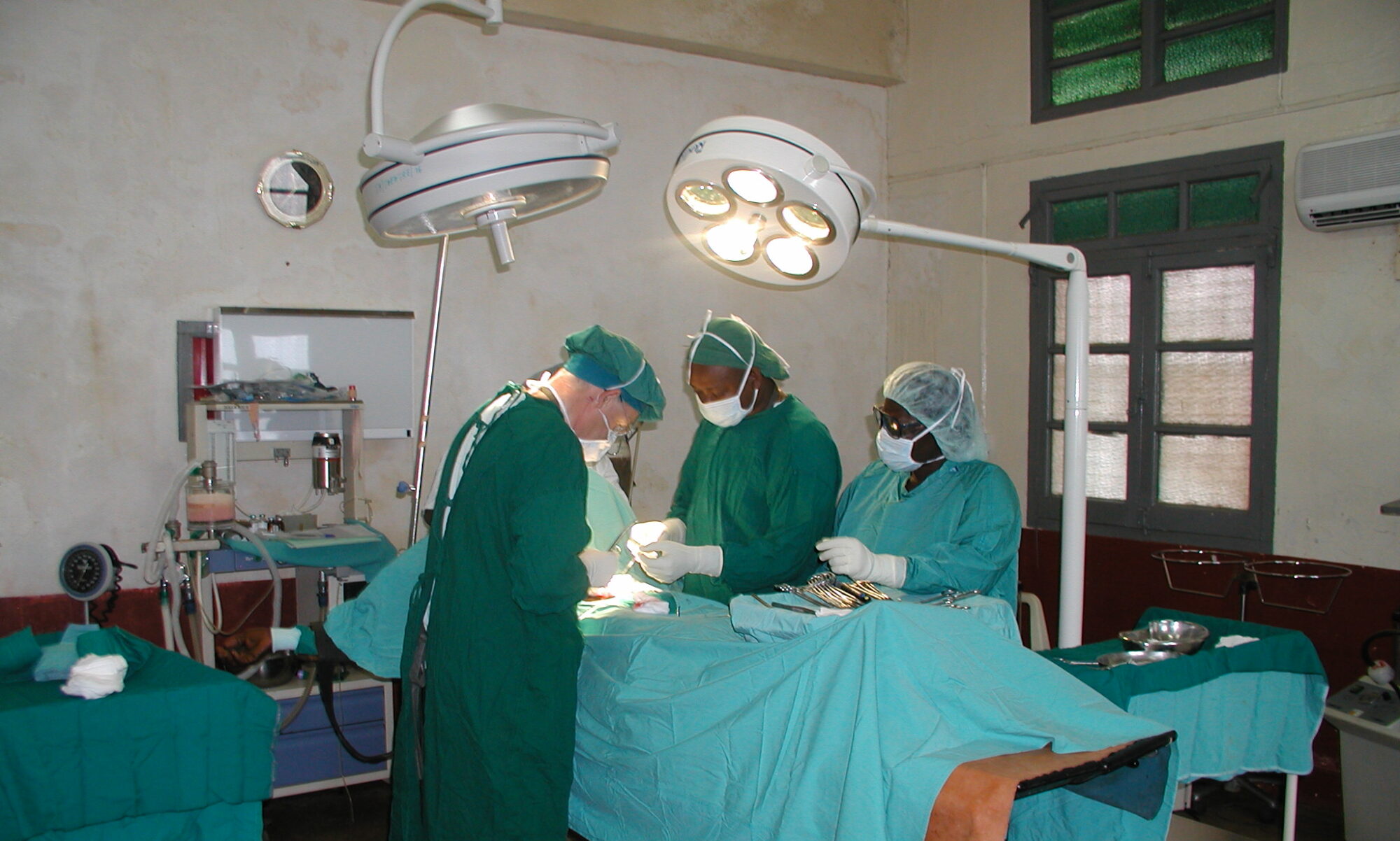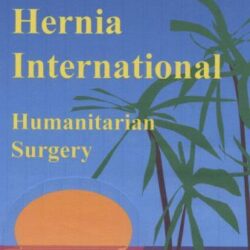HERNIA INTERNATIONAL MISSION NIGERIA.
OCTOBER 11-19, 2023

STATUS: COMPLETED
Coordinator: Dr. Austin Ella (Nigeria), Dr.Ini (Nigeria) Thorbjorn Sommer (Denmark)
General Surgeons: Steve Lindley, (UK) Alan Kravitz (USA) , Thorbjorn Sommer (Denmark)
Nurse: Lene Scheffmann Gosvig (Denmark)
Total: 4 volunteers
TECHNICAL REPORT:
DATES AND LOGISTICS DEPLOYED:
Campaign conducted October 11-20, 2023,
ADULT PATIENTS: Hernias (inguinal, umbilical, ventral, inguinoscrotal), lipomas, hydroceles.
PEDIATRIC PATIENTS: Hydroceles, umbilical hernias, inguinal hernia.
CONSULTATION AND SURGERY PERFORMED:
Total procedures: 99 patients (105 procedures)
Total operated patients: 99 patients (of which 40 were pediatric patients, aged from 20 months to 17 years)
Patients seen in consultation: 130
Complications (within 7 days of our arrival):
– none seen, patients came back day 3 post operatively for check-up.


CAMPAIGN SUMMARY
THE LOCATION
Sisters of Nativity General Hospital was established 2006 by Bishop Athanasius Atule Usuh (Bishop Emeritus of Makurdi Diocese) and went into operation on 1st May, 2006. The hospital is located in Jikwoyi Phase 1, a suburban area south-east of the Federal Capital Territory, and an under-served area with a fast-growing population. It is roughly 15-20km from the City Centre in the outskirts of the town of Abuja with bustling life just outside the compound. The Compound is secluded and a safe place to be in. The nuns live here and took great care of us.
The hospital consists of different departments: Surgical department, emergency department, medical care, HIV projects, vaccinations center, facilities for child-mother care, maternity, laboratory and testing etc.
Concerning the surgical department there were two operation theatres. One was reserved for the current Hernia mission, the other was used for acute surgery, for cases such as caesarean sections.
We created a three-bed operating theatre, making it possible to perform 3 operations simultaneously, which we found very efficient, also making it possible to collaborate with each other with difficult cases.
The operating theatres were equipped with air conditioning, allowing for a comfortable work environment. We were intermittently affected by short power outages, before the hospitals generator kicked in – so our headlamps became crucial to allow us to continue operating.
We brought 2 diathermy machines, one of which one was donated to the Hospital (by funds from Hernia International).
All adult and teenage patients (youngest was 14 years) underwent operation under local anesthesia, – so all these patients walked in and out of theatre without the need of stretchers, making the turnover quick and easy.
Pediatric surgery was performed using a combination with ketamine sedation and local anesthesia. The local Dr. Ini assisted brilliantly with ketamine, love, romantic music and good humour.


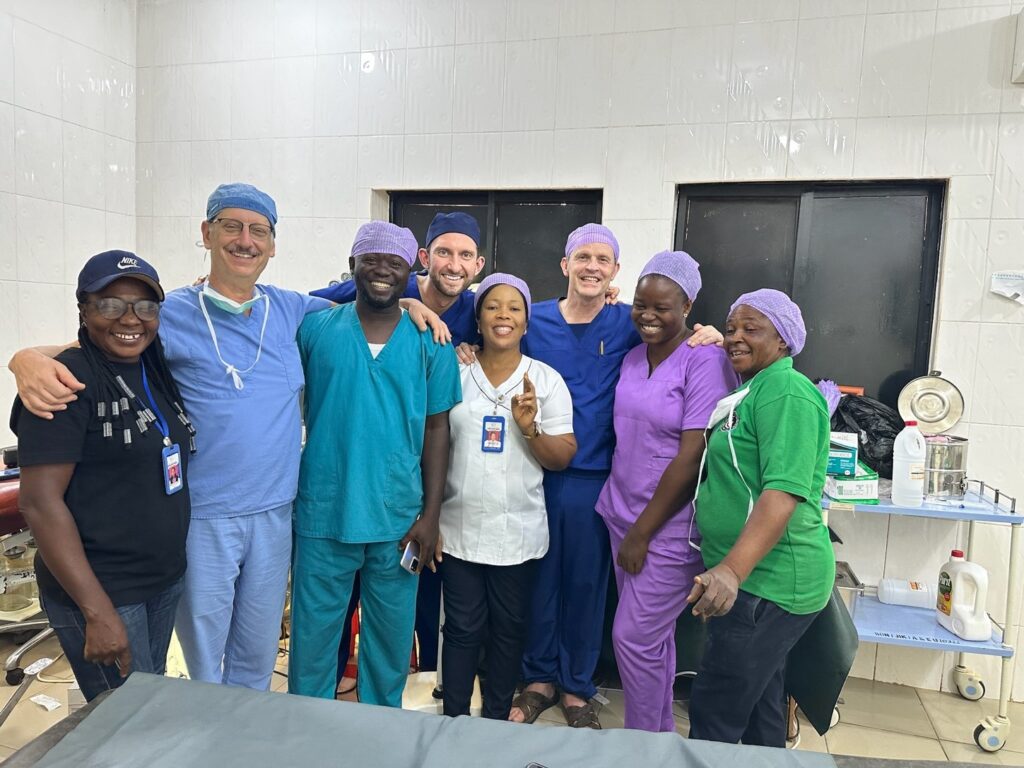
In between surgery we saw patients who requested screening for a variety of surgical/non -surgical diseases, and patients coming for check-up after surgery.
The patients were seen dressed in gowns ready for surgery in a room in front of the theatre where they were marked at the operation site, and informed about surgery, sitting ready for surgery when the first patient left the room. Peripheral venous access was established for children undergoing ketamine sedation before entering the operating room, facilitating the start of surgeries.
Cleaning between the shifts were swift and we developed a fast track way of washing, putting local anesthesia, and getting all ready for surgery.
Almost all patient went home the on the day of surgery and came for check up 2-3 days later in the outpatient department.
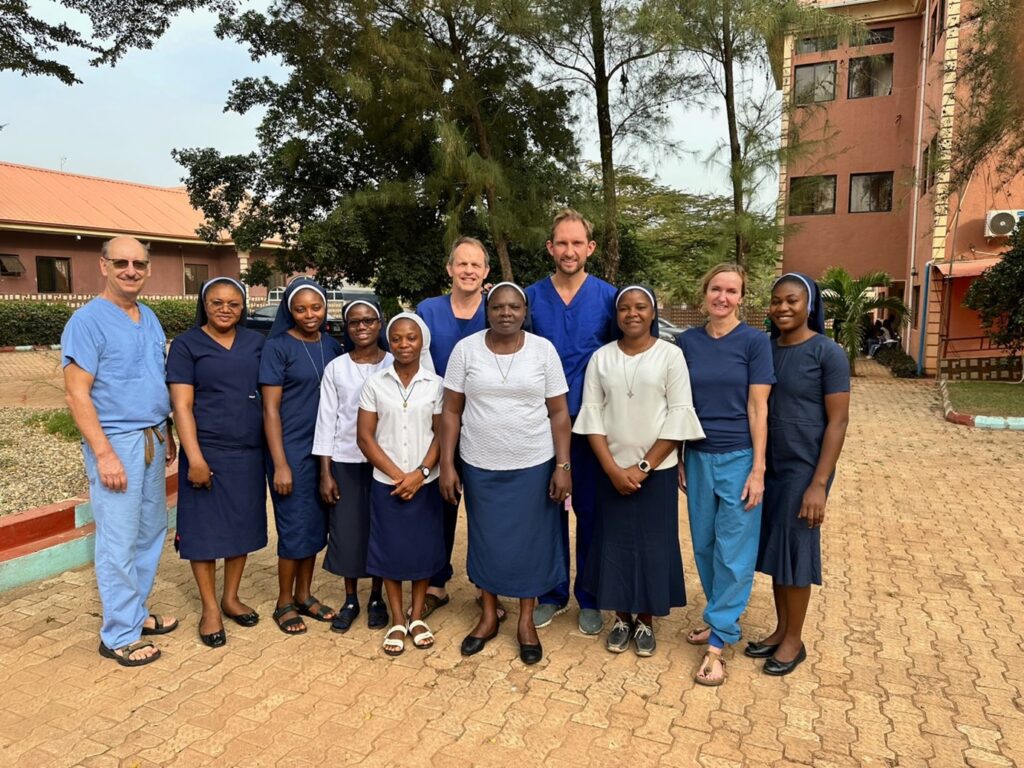
Our dear hosts: Sisters of Nativity
THE TEAM
The team consisted of three surgeons: Steve Lindley (UK), Alan Kravitz (Washington DC) and Thorbjorn Sommer (Team leader Denmark). Anesthetic Nurse Lene Scheffmann Gosvig (Denmark) assisted with the procedures together with the local nurses.
Two months before departure we had 2 virtual Zoom meetings, the first including our African colleagues, where we were introduced to each other, discussed the mission, the need of equipment and had a very good introduction by Dr. Austin and Dr.Ini (who actually took us on a virtual tour with his mobile on facetime around the Hospital – super nice !).
LOCAL STAFF
In the corridor nurse Benita made sure to list all the patient for each day, kept a very strict protocol ensuring a good overview of patient flow. She knew exactly where the patients were, when they should be operated and for what, which created a swift flow of patient and very short intervals between operations. Lead scrub nurse Rose was phenomenal, managing many different members of staff who came to help in theatre. The nurses, some of whom had limited theatre experience did a very good job assisting us, and we tried to share as much knowledge with them as we could – Steve didn’t let up in his teaching, with very rewarding results.
EQUIPMENT
Concerning Equipment, we brought two Diathermy Machines, drapes, gowns, sutures, meshes, gloves, masks, drains and surgical instruments (the latter was also left at the hospital for future use).
There was one monitor with a pulse oximeter and a blood pressure cuff, without an ECG, which were used when patients received Ketamine (kids).
The last days we used the local textile gowns and drapes which we found very usable. In future missions it seems more sustainable to bring new textile gowns and drapes which can be used after the mission, minimizing the amount of waste of single-use gowns and drapes.
ANESTHESIA
The operating room was equipped with oxygen supply and a ventilator which we did not use. We did not use any spinal anesthesia.
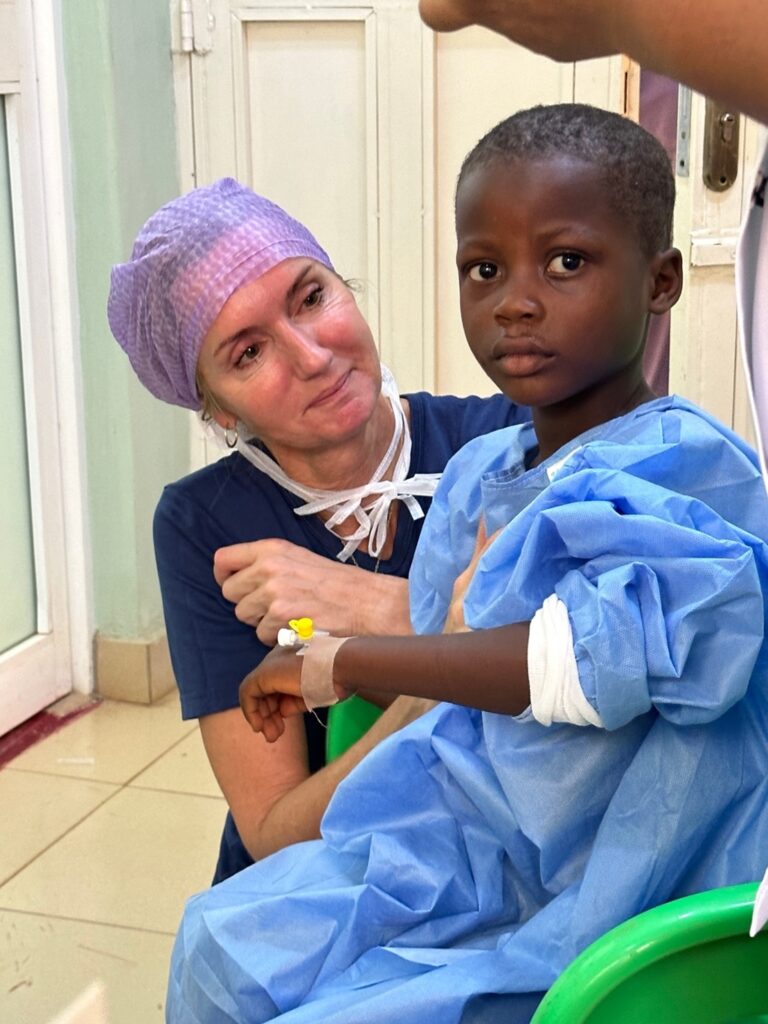
Ketamine was available at the hospital as well as Lignocaine. We used our own Marcaine with adrenaline the first days and Lignocaine for the last days and found either very affective when applied in steps of cutaneous, subcutaneous, and subfacial injection steps before washing and draping, making the effect of local anesthesia maximal before commencing surgery. That strategy made it possible also to do inguinoscrotal hernias as well under local anesthesia.
ASEPSIS AND SURGICAL MATERIAL
All patients had washed before arrival for surgery. At the hospital they were washed with appropriate antiseptics, hair was removed, the site of operation marked on the skin and local anesthesia was applied.
Basic surgical material boxes were available, however a lot of the instruments were not appropriate, so we had to sort out small instruments for the kids, and fortuitously, we brought a few appropriate sets of instruments, which were left for future use by the local staff.
ACCESSIBILITY FOR THE POPULATION
Before our arrival, the Hospital had conducted an information campaign with information about the possibility of hernia surgery. The patients paid what they could afford, some came a long way to be operated (7-8 hours of transportation).
The patients had preoperative pain killers (Paracetamol+NSAID) and postoperatively they were given a single dose of antibiotics. We recommend bringing NSAIDS , antibiotics and Paracetamol.
ACCOMODATION IN ABUJA
We stayed within the Sisters of Nativity Compound, where the Hospital was situated, a 1 hour drive from the international Airport. It was a perfect and very safe place to be located in. We were greeted with flowers, songs and dance and a nice meal when arriving. The sisters were amazing hosts, providing us with food and beverages, good company, love and smiling faces every day, – such an encouragement. The rooms were nice and spacious with a private bathroom. Laundry was offered as well.
Our routine included Breakfast at 7AM before starting surgery at 8-8.30 AM.
We had a lunch break at 2 PM, and finished the last surgery between 4 and 8 PM, depending on the number of cases scheduled.
On the first Sunday we were joined by Dr. Austin in Harvest mass at the Catholic Church and had Lunch with Leaders in the organization, – a memorable event to participate in.
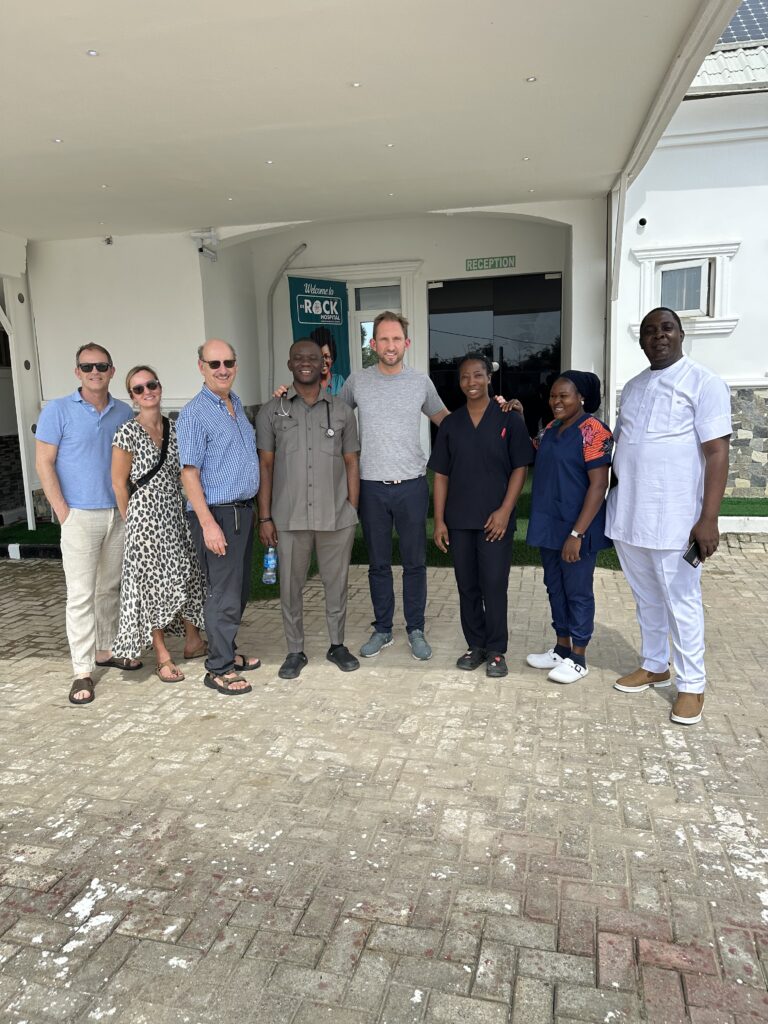
The last evening the sisters had invited us to a Party in the Compound with dances, food, heartful moving speeches – and they dressed us in beautiful traditional Nigerian dress as a gift to bring home with us. We are so grateful for the opportunity to be a part of this, and we all expressed our mutual gratitude for the successful campaign.
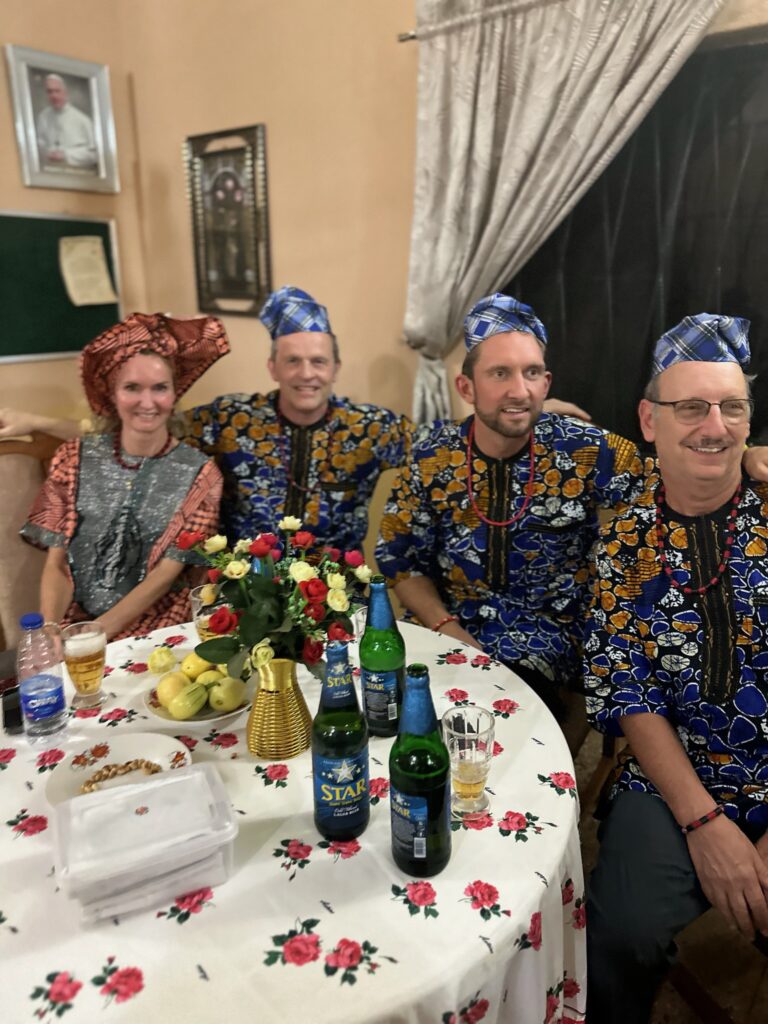
The reason for this was first of all Dr. Austin Ella and the staff at the Hospital and Sisters of Nativity. They ensured that the logistics worked, they were prepared with patients on the line when we arrived and working together was a lifetime experience for all of us. We left a piece of our heart with them.
CONCLUSION
Strengths of this location:
The Hospital is close to the Airport, reducing time for transportation to a minimum. Patients came from far away, and the standard at the facility makes it easy to do high-volume Surgery with good quality in every aspect.
You can`t find a better host than Sisters of Nativity – they were everything from caring hosts, joyful company, incredibly good cooks taking care of our needs.
The Hospital is 30 steps from accommodation – so no time is wasted on transportation.
We had a very good collaboration with the staff in assisting us with everything.
There is a very good opportunity to continue and develop the work in this place with the local staff and contribute with surgical expertise.
We highly recommend Hernia Missions conducted on a regular basis to Sisters of Nativity in Abuja!
Things we might do differently:
Thinking sustainability from the start when doing the campaign, avoiding the heavy loads of single use gowns and drapes. Provide equipment that can be used further on.
Bringing more local anesthetics, antibiotics, painkillers and dressings.
We had to pay for registration to the Nigerian Medical Association which we hope can be negotiated at a reduced rate for future doctors.
We found (some of us) that diathermy was very useful and can recommend bringing it with you.
On behalf of the Team 2023
Yours sincerely,
Thorbjorn Sommer
Head of the Hernia International Mission to Abuja November 2023
